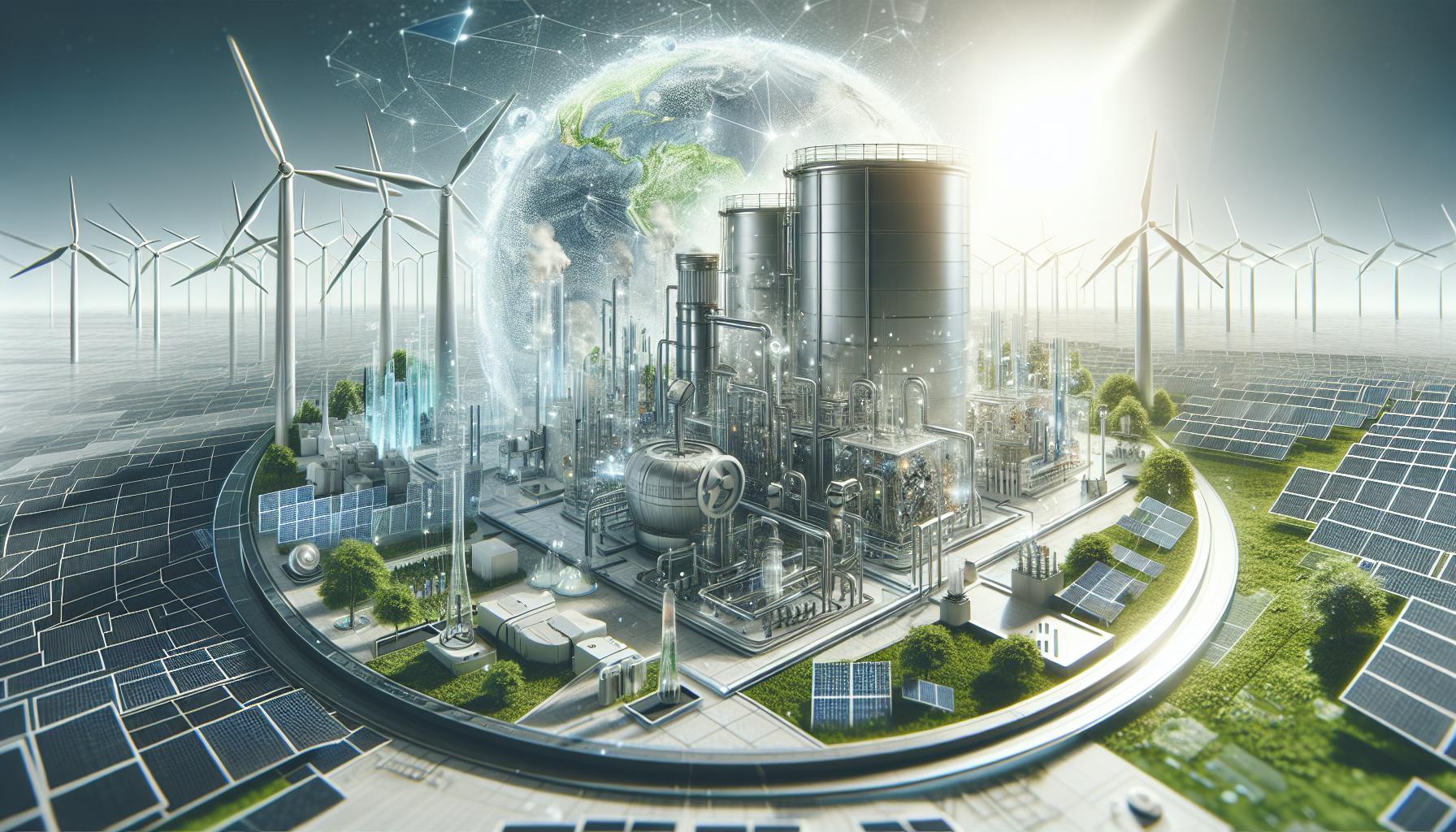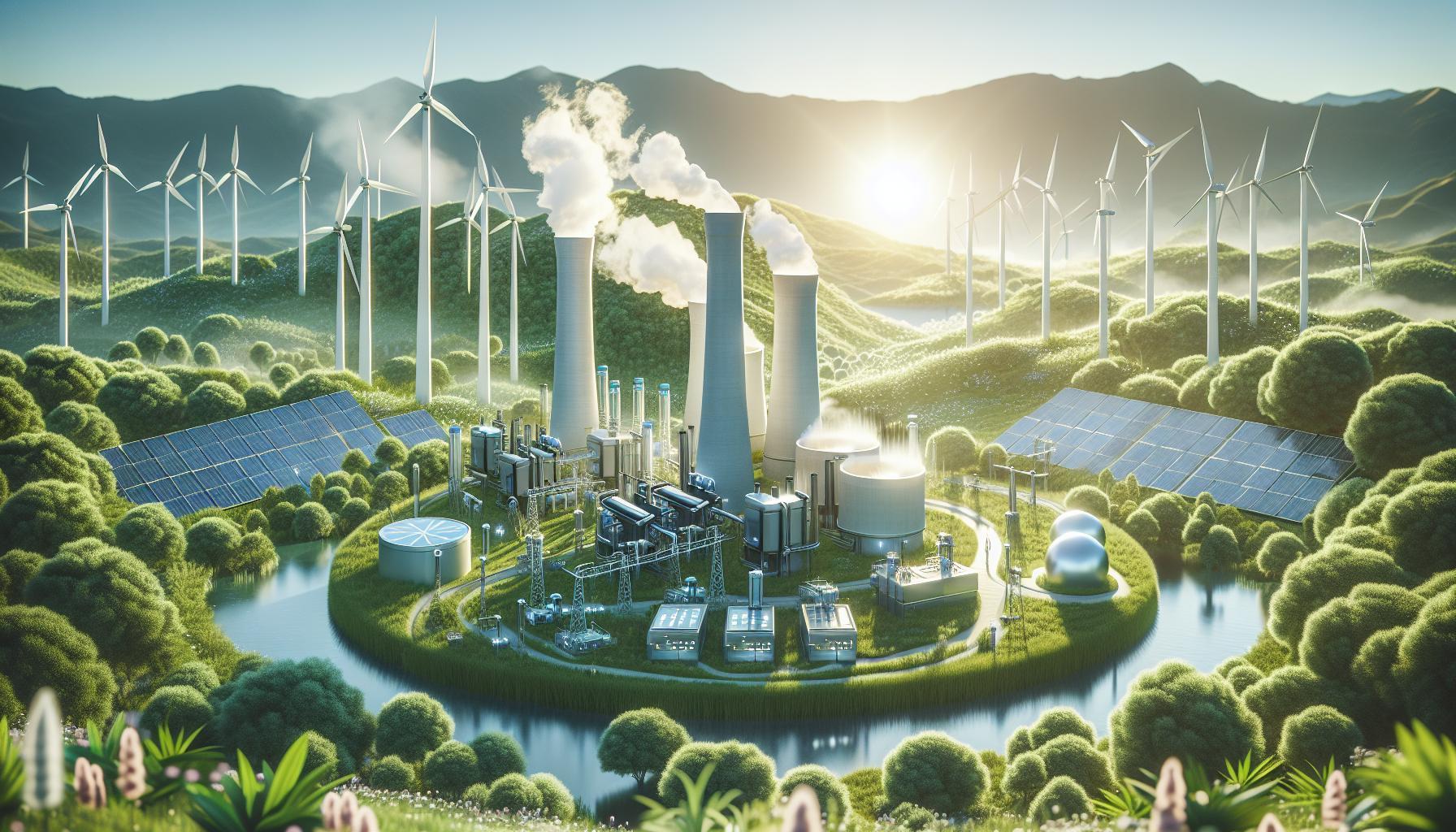Every year, millions of tons of municipal solid waste end up in landfills, contributing to pollution and greenhouse gas emissions. However, waste-to-energy (WTE) processes offer a compelling solution by converting waste into usable energy, producing steam and electricity while reducing landfill volume. This innovative approach not only helps in managing our waste more sustainably but also raises important questions about its classification as a renewable energy source.
As our society becomes increasingly concerned about environmental impacts and energy sustainability, understanding the pros and cons of waste-to-energy is essential. While WTE can significantly reduce waste and generate clean energy, it also poses challenges, including emissions and resource recovery. In this article, we will explore whether waste-to-energy truly qualifies as renewable and examine the environmental implications that accompany this technology. Discover the pivotal role WTE can play in our transition to cleaner energy solutions and how it affects our planet’s future.
Is Waste to Energy Truly Renewable?
The debate surrounding the renewable status of waste-to-energy (WtE) processes is invigorated by a blend of scientific inquiry and societal perception. At the heart of the discussion is whether the energy extracted from waste materials qualifies as renewable energy. Waste-to-energy technology focuses on converting non-recyclable materials into usable heat, electricity, or fuel through various processes, essentially capturing the energy stored in waste. This practice not only helps reduce landfill dependency but also seeks to harness and utilize what many perceive as a waste product.
To dissect the renewable nature of WtE, one must consider the feedstock used. Many proponents argue that since the organic materials-such as food scraps and biodegradable items-are derived from biological processes, the energy created can be considered renewable. In contrast, materials with petroleum origins, like plastics, complicate this claim, as their extraction and production involve fossil fuels, which are non-renewable resources. Consequently, while WtE can contribute to a reduction in greenhouse gas emissions compared to traditional energy production methods by diverting waste from landfills, it still poses challenges related to sustainability.
Moreover, the implementation of WtE facilities can lead to increased dependence on waste generation rather than promoting reduction or recycling efforts. This raises concerns about whether a focus on energy extraction from waste might detract from essential waste reduction strategies in the long term. Thus, while WtE can play a role in an integrated waste management and renewable energy system, it should be carefully balanced with broader sustainability goals to ensure it aligns with the fundamental principles of renewable energy development-namely reducing reliance on fossil fuels and minimizing environmental impact.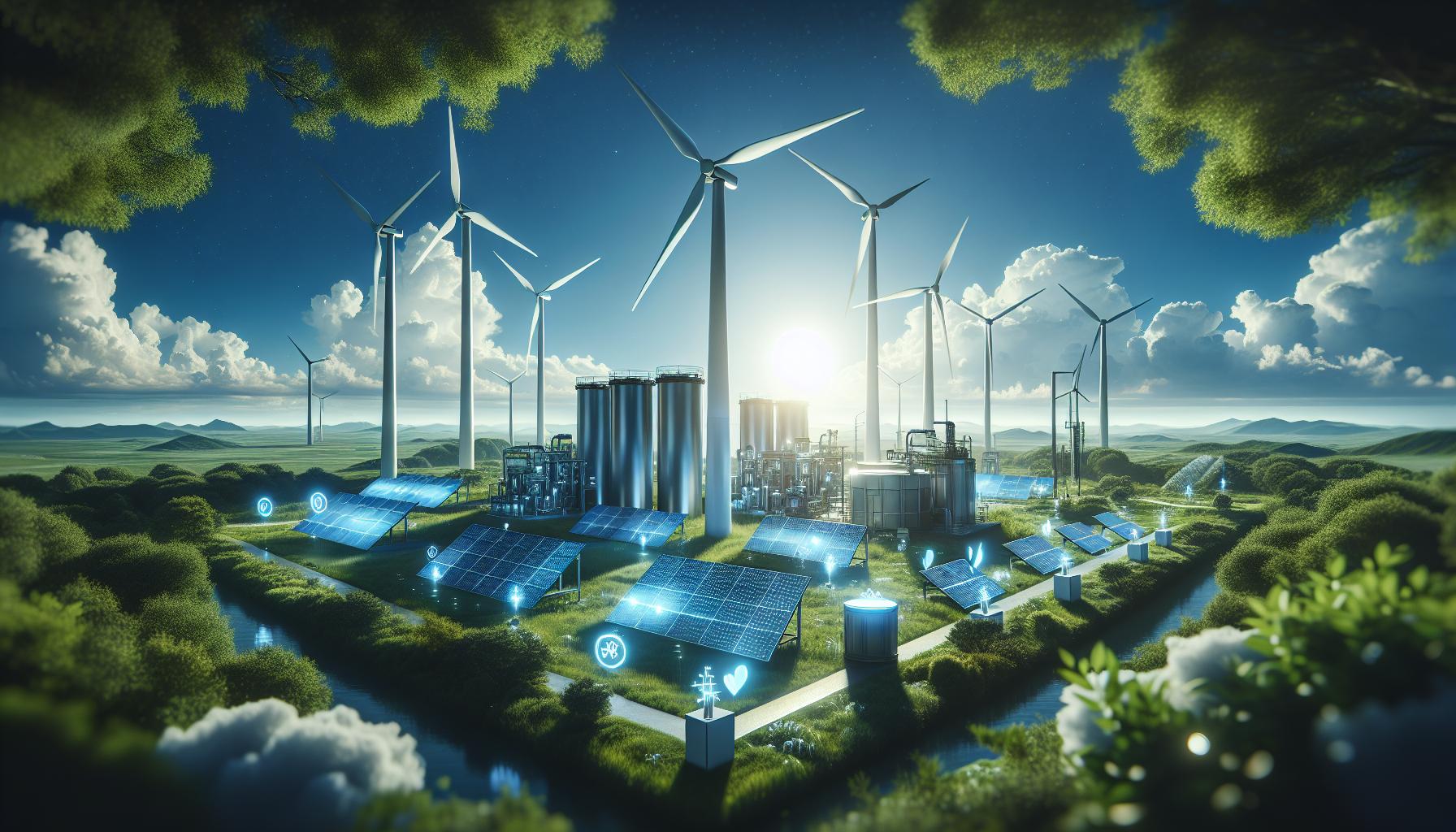
Understanding Waste to Energy Technologies
Waste-to-energy (WtE) technologies are an increasingly vital component in our quest for sustainable energy sources. By converting non-recyclable waste materials into usable energy-such as electricity, heat, or fuel-these technologies play an essential role in addressing the dual challenges of waste management and energy production. As urbanization and consumption continue to rise, WtE systems offer innovative solutions to transform what is often seen as mere refuse into valuable resources.
At the core of WtE technology are several key processes, including incineration, gasification, and anaerobic digestion. Each method has its unique advantages and applications:
- Incineration: This process involves burning waste at high temperatures to generate heat, which can then produce steam to drive turbines for electricity generation. This method significantly reduces the volume of waste-by up to 90%-making it a favored choice in densely populated areas.
- Gasification: Here, organic material is heated in a low-oxygen environment, converting it into synthesis gas (syngas), which can be used to produce electricity or even be refined into fuels. Gasification can handle a wide variety of feedstocks, including plastics and biomass, thus broadening its applicability.
- Anaerobic Digestion: This biological process uses microorganisms to break down organic matter in the absence of oxygen, producing biogas (mainly methane) that can be used for heating or electricity generation. It’s particularly effective for agricultural waste and food scraps.
These technologies not only provide an alternative energy source but also contribute to reducing landfill waste, thus minimizing methane emissions-a potent greenhouse gas typically released from decomposing waste. Nevertheless, the potential advantages must be carefully weighed against environmental concerns, such as the emission of pollutants during the processes.
Critics of WtE often raise valid points regarding the long-term sustainability of relying on waste for energy. The challenge lies in balancing the push for energy extraction against the need for improved waste management practices. An over-reliance on WtE may inadvertently undermine efforts to promote recycling and waste reduction, which are critical in achieving comprehensive sustainability goals. Thus, while WtE technologies present promising advancements in renewable energy generation, their implementation must be integrated thoughtfully within broader waste management frameworks to enhance environmental benefits and drive community acceptance.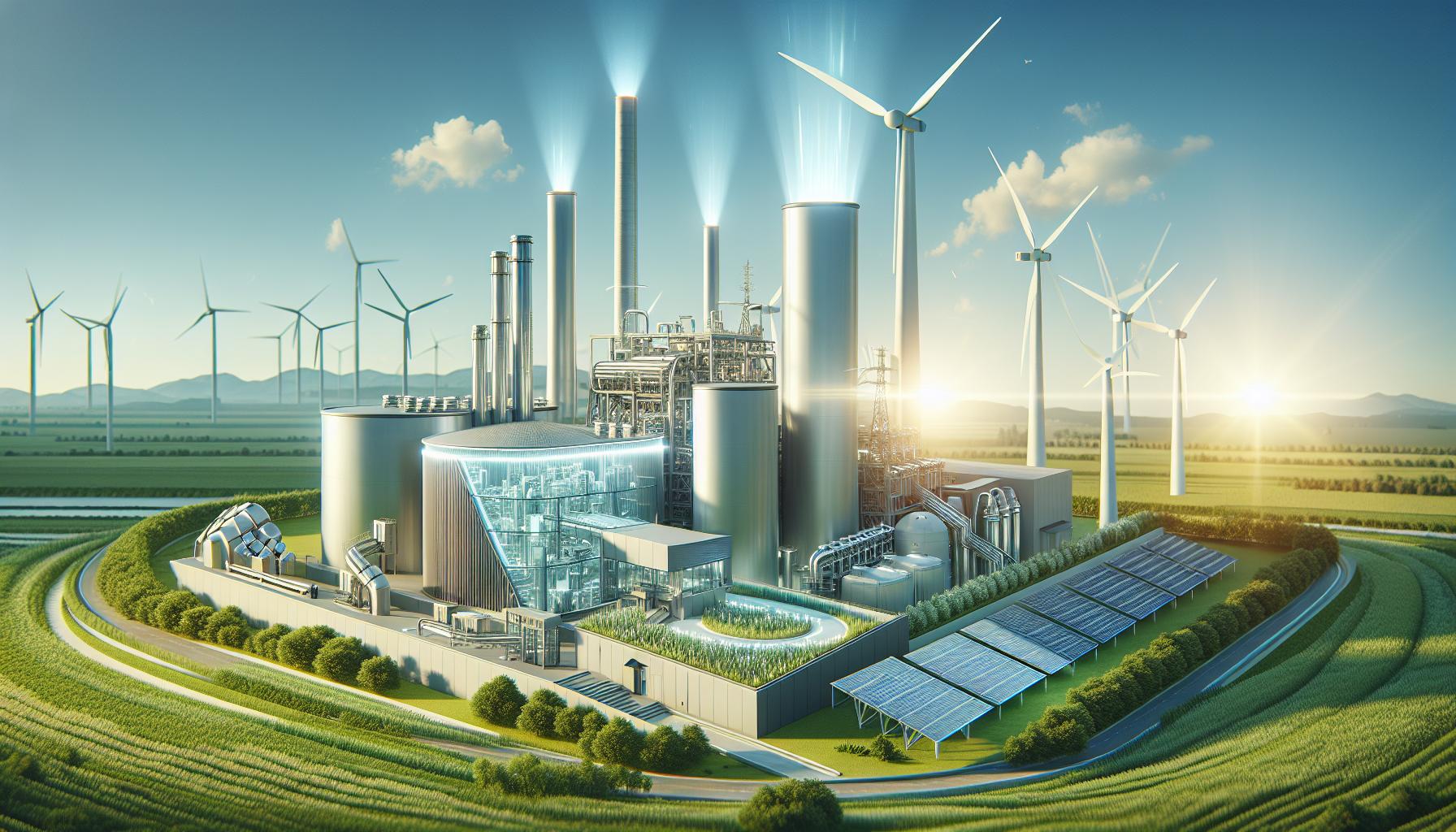
Environmental Impact: Pros of Waste to Energy
The transformative potential of waste-to-energy (WtE) technologies cannot be overstated, as they tackle two pressing global challenges simultaneously: energy generation and waste management. By converting non-recyclable waste into usable energy like electricity or heat, these processes mitigate the environmental impact of solid waste while providing an alternative to fossil fuels. In fact, utilizing WtE technologies can significantly reduce the volume of waste that ends up in landfills, which is crucial in reducing landfill expansion and the associated greenhouse gas emissions.
One of the primary environmental advantages of WtE is its ability to minimize methane emissions. Methane, a potent greenhouse gas, is produced when organic waste in landfills decomposes anaerobically. By diverting waste from landfills and converting it through incineration, gasification, or anaerobic digestion, WtE technologies significantly lower methane output, thereby enhancing air quality and reducing the overall carbon footprint. For instance, according to the EPA, every ton of waste diverted from landfills through WtE can reduce greenhouse gas emissions equivalent to taking a car off the road for a year.
Utilizing waste as a resource also aligns with circular economy principles, promoting sustainability and resource efficiency. Instead of viewing waste as a burden, WtE reframes it as an opportunity to recover energy. This shift in perspective fosters innovation in waste management practices and encourages communities to improve recycling rates, as the focus on waste reduction and recovery becomes integral to local and regional strategies. Furthermore, WtE facilities can co-locate with recycling plants, creating a synergy that optimizes resource recovery.
Finally, the adoption of WtE technologies can spur economic growth and job creation within local communities. Many WtE facilities require skilled labor for operation and maintenance, leading to job opportunities in areas that may experience economic challenges. Moreover, by producing local energy, these facilities can reduce dependence on imported fuels, resulting in more stable energy prices and greater energy security.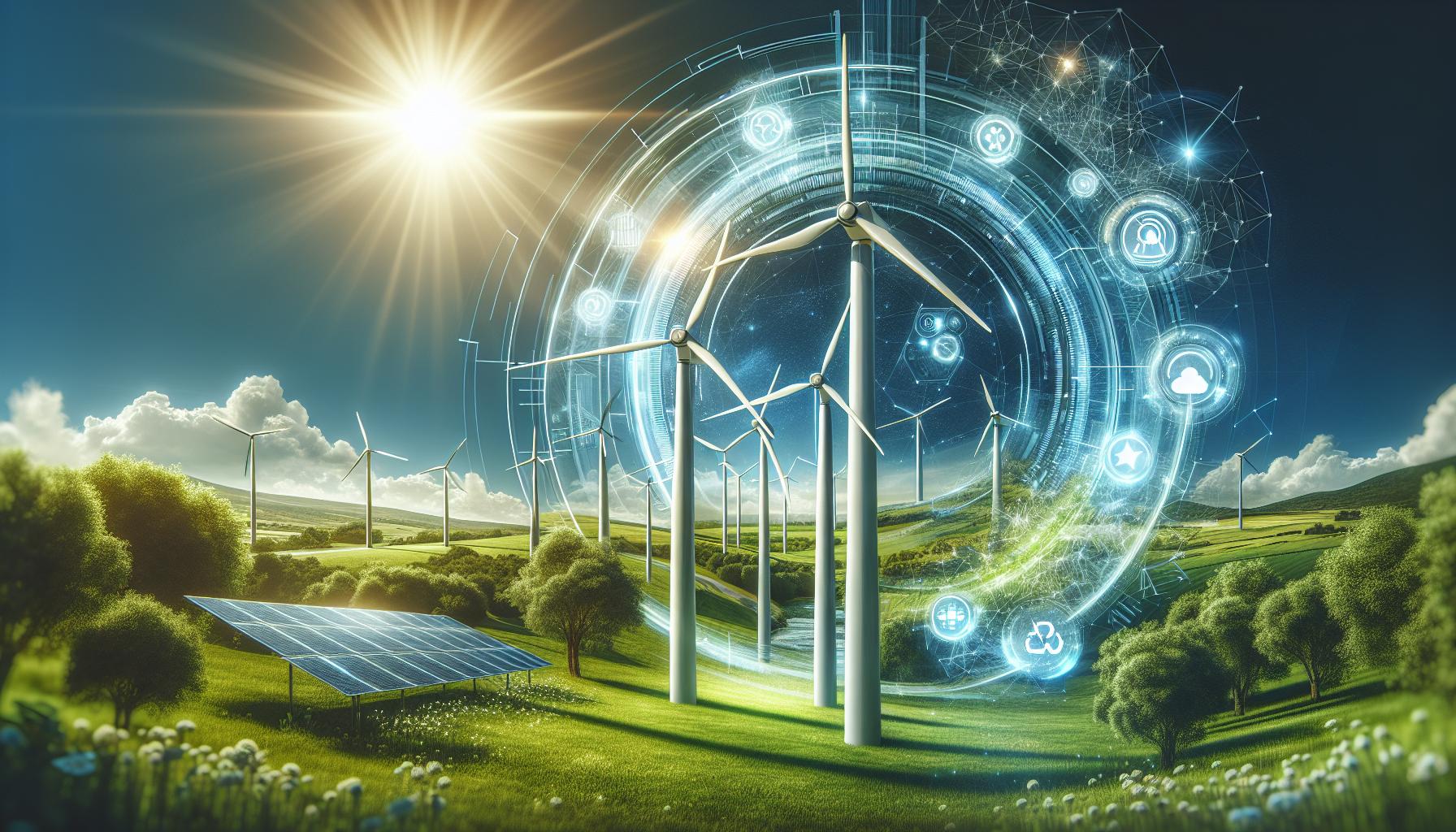
Analyzing the Cons: Environmental Concerns
The energetic allure of waste-to-energy (WtE) technologies can sometimes overshadow the environmental concerns that accompany their implementation. While these systems promise a greener alternative to fossil fuels, potential drawbacks primarily center around emissions and resource management that must be critically evaluated. WtE processes often involve incineration or gasification, methods that can emit various pollutants into the atmosphere, including dioxins, furans, and particulate matter. These emissions pose health risks, particularly to vulnerable populations living near waste-to-energy facilities.
Impact on Air Quality
One significant concern is the air quality impact. Even with advanced filtration systems, some pollutants can escape and contribute to air pollution. For instance, studies have demonstrated that despite stringent regulations, emissions from WtE plants can include harmful substances that affect respiratory health and overall community well-being. Local residents often express fears about the proximity of WtE plants to their homes, citing health effects that could stem from exposure to trace toxins released during waste processing.
Resource Inefficiency
Furthermore, WtE can sometimes inadvertently promote a linear approach to waste management, undermining the principles of recycling and resource conservation. The presence of WtE facilities may reduce the incentive for communities to increase recycling rates, as the conversion of waste to energy can lead to the perception that waste is simply a resource for energy generation. This can result in less stringent waste segregation practices, where recyclable materials are discarded and instead sent to WtE plants, ultimately leading to resource wastage.
Greenhouse Gas Emissions
While WtE can reduce methane emissions from landfills, it is important to note that such facilities are not entirely carbon-neutral. The combustion of waste materials can result in the release of greenhouse gases, including CO2. The life cycle of waste-to-energy conversion and its overall carbon footprint need robust assessments. As communities strive for carbon neutrality, fully understanding these emissions becomes vital for informing public policy and energy strategies.
In conclusion, while waste-to-energy presents a pathway toward sustainable energy amidst growing waste challenges, the hidden costs to health, air quality, and resource management merit serious consideration. These factors should be integrated into comprehensive waste management and energy policies to ensure that the shift towards WtE is genuinely beneficial for both the environment and the communities it serves.
Waste to Energy vs. Traditional Energy Sources
The increasing demand for energy alongside the rising global waste crisis has led many to consider waste-to-energy (WtE) as a viable alternative to traditional energy sources. Unlike fossil fuels, which are finite and contribute significantly to greenhouse gas emissions, WtE technologies aim to convert municipal solid waste (MSW) into usable energy, offering a dual solution to energy shortages and waste management challenges. By burning waste to generate steam and electricity, WtE systems capitalize on the energy stored in discarded materials, creating a productive outlet for items that would otherwise end up in landfills.
Comparative Efficiency
One of the key distinctions between WtE and traditional energy sources like coal, natural gas, or oil lies in the energy conversion process. WtE facilities typically provide a steady, controllable output of electricity, which can be harnessed to meet base-load energy demands. For instance, according to the U.S. Environmental Protection Agency, WtE plants can deliver energy reliably, often achieving efficiency rates similar to that of coal-fired facilities when factoring in energy recovery from the heat generated during waste combustion. This efficient handling of waste also diverts significant volumes from landfills, thereby reducing methane emissions-a potent greenhouse gas-with a much stronger atmospheric impact than carbon dioxide.
Environmental Considerations
When analyzing the environmental aspects, it’s important to weigh the emissions from WtE against those from fossil fuels. While WtE systems do produce emissions, advancements in technology have led to cleaner combustion processes that employ rigorous air pollution control measures. Furthermore, modern WtE plants are designed to minimize the release of harmful pollutants and operate within stringent regulatory frameworks. This is in stark contrast to the often unchecked emissions from coal and other fossil fuel power plants, which contribute heavily to air pollution and climate change.
However, it is vital to consider that WtE should not be viewed as a silver bullet. The extraction of energy from waste does require vigilance in emissions management and resource recovery. Unlike clean renewables such as solar or wind, which produce zero emissions during energy generation, WtE processes require comprehensive evaluation of their life cycle emissions, energy efficiency, and overall contribution to climate strategies.
Ultimately, while waste-to-energy presents an innovative solution for energy production and waste management, it is crucial to integrate it into a broader sustainable energy strategy that emphasizes reducing waste generation, enhancing recycling, and promoting the development of truly renewable energy sources. This balance ensures that we not only manage our waste effectively but also move toward a cleaner, more sustainable energy future.
Public Perception and Community Impact
The integration of waste-to-energy (WtE) technologies into community energy strategies often sparks spirited debate, reflecting a blend of scientific understanding and emotional response. Many community members are initially skeptical about WtE facilities due to concerns over emissions, potential odor, and the stigma associated with burning trash. Yet, as community leaders foster transparency and engagement, public perception gradually shifts, especially when citizens understand the environmental benefits and economic incentives of WtE systems.
A significant factor influencing public support for WtE initiatives is education about the technology. Providing clear information about the advanced emissions controls employed in modern plants can alleviate fears. For instance, emissions from these facilities have decreased significantly due to technological advancements, positioning them as a cleaner alternative to traditional fossil fuel sources. Community workshops that explain how WtE not only generates energy but also reduces landfill waste and methane emissions can empower citizens to view WtE as a proactive solution to both waste management and energy sustainability.
The community impact extends beyond environmental considerations; economic aspects also play a crucial role. WtE plants can create local jobs in construction, maintenance, and operations, fostering community investment in the process. Moreover, when managed correctly, the revenue generated can be reinvested into local projects, thus enhancing public goods and services. For example, in many U.S. municipalities, funds from WtE operations support local educational programs or infrastructure improvements, showcasing a tangible return on community acceptance and investment in the technology.
Public perception evolves over time, influenced by tangible outcomes and proactive community outreach. Engaging citizens through tours of WtE facilities, educational programs in schools, and proactive dialogue about health and environmental monitoring helps demystify the process. Ultimately, as communities navigate these discussions, they not only redefine their understanding of waste management but also contribute to a collective vision for a sustainable energy future that embraces innovation while addressing genuine concerns. This growing acceptance of WtE can lead to a more integrated approach to waste management and energy production, setting the foundation for initiatives that prioritize both ecological integrity and community well-being.
Economic Considerations of Waste to Energy
The financial viability of waste-to-energy (WtE) systems is increasingly recognized as a critical component of sustainable waste management and energy production. By converting municipal solid waste into valuable energy, WtE facilities offer a dual benefit: they generate renewable energy while simultaneously reducing the pressure on landfill spaces. This eco-efficient approach can result in significant cost savings for local governments and communities, effectively enhancing economic resilience.
One of the primary economic benefits of WtE is job creation. These facilities typically employ staff for operations, maintenance, and support services, thus directly contributing to local employment. According to various studies, a single WtE plant can create dozens of jobs, from engineering roles to administrative positions. Additionally, there are indirect economic benefits, such as increased demand for local services and supplies during the construction and operational phases. Furthermore, WtE plants can stabilize waste disposal costs for municipalities, providing a predictable financial model that alleviates the volatility associated with traditional landfill sites.
Revenue generation is another crucial aspect to consider. WtE plants not only produce energy that can be sold back to the grid but also create opportunities for the sale of byproducts, such as ash for construction or metal recovery. For instance, facilities may utilize advanced technologies to optimize the extraction of recoverable materials, thus enhancing their economic model. The revenue generated can be reinvested into local projects, bolstering community programs or improving public infrastructure, which fosters a positive feedback loop for the local economy.
Investment in WtE technology can also be seen as a long-term cost-saving measure. While the initial capital investment may be substantial, the operational efficiencies gained in energy generation and waste reduction can lead to reduced overall waste management costs. Over time, communities can realize lower costs per ton for waste processing compared to traditional landfill fees, especially as landfill space continues to dwindle and associated costs rise.
The integration of WtE facilities reflects a broader shift towards circular economy principles, wherein energy recovery processes contribute not only to local economic stability but also to global sustainability efforts. By viewing waste as a resource rather than a burden, communities position themselves at the forefront of innovation in managing waste while shifting towards renewable energy sources. Thus, the economic considerations surrounding waste-to-energy technologies embody the dual promise of both fiscal responsibility and environmental stewardship.
Innovations in Waste to Energy Solutions
In recent years, the waste-to-energy (WtE) sector has seen remarkable advancements that reinvigorate the conversation around its role in renewable energy strategies. As global waste production continues to rise, innovative technologies are being developed to optimize the conversion of refuse into energy, making the process more efficient and environmentally friendly. For example, the integration of plasma gasification into WtE facilities represents a paradigm shift, allowing for virtually complete conversion of waste into syngas without the harmful emissions associated with traditional incineration methods. This innovative approach not only minimizes the volume of waste but also opens the potential for producing not just electricity, but also biofuels and other valuable chemicals.
Advanced Sorting and Pre-Treatment Techniques
Recent innovations have focused on improving the sorting and pre-treatment of waste prior to energy conversion. Smart technologies, such as AI-driven sorting systems, are now being implemented to enhance the efficiency of waste separation. These systems utilize sophisticated algorithms and machine learning to identify and sort recyclables and contaminants from waste, significantly improving the purity of materials sent to energy recovery processes. This smart sorting not only maximizes the energy yield from waste but also minimizes the environmental footprint by ensuring that recyclable materials are diverted from the process altogether.
Energy Recovery Efficiencies
Another key innovation includes the application of combined heat and power (CHP) systems that harness both electricity and thermal energy from WtE processes. By effectively capturing and utilizing the heat generated during energy recovery, CHP systems can achieve overall efficiencies of over 80%. This dual generation increases the attractiveness of WtE facilities within the energy market, ensuring that they not only serve as waste management solutions but also as significant contributors to local energy grids. Furthermore, research into anaerobic digestion technologies continues to advance, effectively breaking down organic waste to produce biogas, which can serve as a clean and renewable energy source.
Ultimately, these innovations reflect a broader trend toward integrating WtE solutions within circular economy frameworks. By enhancing the efficiency and functionality of WtE technologies, communities can transition toward viewing waste not merely as a problem to be managed, but as a crucial resource in the journey towards sustainable energy solutions. As public and private sectors invest in these innovative technologies, the path to a cleaner, more sustainable future through waste-to-energy processes becomes increasingly viable.
Global Case Studies: Success and Challenges
Exploring successful global implementations of waste-to-energy (WtE) technologies reveals a compelling narrative that blends triumphs with ongoing challenges. Cities tackling high waste production while transitioning to renewable energy sources have pioneered methods worth studying. For instance, Sweden stands as a beacon of success in WtE, effectively converting over 99% of its waste into energy. The nation has developed an extensive network of advanced waste incineration plants that not only generate electricity but also provide district heating for homes. Sweden’s commitment to viewing waste as a resource has led to significant carbon emission reductions, highlighting the potential benefits of effective WtE systems.
However, the story is not without its obstacles. Countries like the United States face stark contrasts; while several cities have embraced WtE, public opposition often derails projects due to concerns about emissions and health impacts. For instance, the proposed WtE facility in New York faced significant backlash from residents fearing that emissions could undermine local air quality. This underscores the critical importance of engaging communities in the planning process to address their concerns and foster support. Without public trust and awareness of the extensive environmental safeguards in place, even well-designed projects can stall.
Measuring Success: Global Examples
To understand the varied outcomes of waste-to-energy initiatives, it is essential to consider key performance metrics:
- Energy Output: In Tokyo, Japan, WtE facilities convert 8,350 tons of waste daily into approximately 450 MW of electricity-enough to power hundreds of thousands of homes.
- Reduction in Landfill Dependency: Germany has significantly decreased its landfill usage by converting 30% of its waste into energy through a combination of anaerobic digestion and incineration.
- Public Engagement: In places like San Francisco, community-driven approaches have resulted in recycling and composting programs that complement WtE efforts, reducing waste sent to incinerators.
Yet, there are still innovation gaps that need addressing: enhancing efficiency in energy recovery, refining emissions control technologies, and ensuring equitable community benefits.
As the landscape of waste-to-energy continues evolving, ongoing research and development are crucial. Each case study contributes unique lessons that can be applied globally, informing best practices while reinforcing the notion that when waste management aligns with renewable energy goals, it has the potential to yield substantial environmental and social dividends. The way forward hinges on innovative thinking, public collaboration, and a commitment to overcoming challenges in the quest for sustainability.
Future Trends in Waste to Energy Investment
As the global landscape continues to shift towards sustainability, the waste-to-energy (WtE) sector is poised for transformative growth. Investments in WtE technologies are increasingly seen not merely as waste management solutions but as integral components of a circular economy. By converting waste into valuable energy-be it electricity or heat-cities and countries are not only reducing landfill use but are also addressing energy shortages and contributing to greenhouse gas mitigation. For instance, according to industry analysts, the WtE market is projected to grow significantly, driven by stringent waste management regulations and the rising need for renewable energy sources. As communities embrace this approach, it becomes essential to consider emerging trends that will shape the future of WtE investments.
One promising trend is the advancement of anaerobic digestion technologies. This process harnesses microorganisms to break down organic matter, producing biogas capable of generating electricity. The global market for anaerobic digestion is expected to expand rapidly as it offers a two-fold benefit: reducing waste and producing renewable energy. Regions with significant agricultural activities are particularly well-positioned to capitalize on this technology, utilizing agricultural waste and livestock manure while minimizing methane emissions from landfills. Furthermore, integrating these systems into existing waste management practices can create synergies that enhance economic viability and community support.
Another key trend is the push for greater efficiency and innovation in emission control technologies. As regulatory pressures increase, WtE facilities are investing in state-of-the-art filtration and scrubbing systems to minimize pollutants. For example, European WtE plants have been at the forefront of adopting these technologies, significantly reducing dioxin emissions while improving energy recovery rates. This not only enhances public trust but also aligns WtE practices with global sustainability goals, positioning the sector favorably in the clean energy landscape. As companies adopt more transparent reporting and embrace best practices in emissions management, the narrative surrounding WtE as a viable renewable energy source will strengthen.
Community engagement remains vital to the advancement of WtE investments. Cities that actively involve residents in planning and decision-making processes see higher acceptance rates for new facilities. Public awareness campaigns that highlight the benefits of WtE solutions-such as job creation and local energy production-are essential for fostering a supportive environment. Furthermore, leveraging social media and community forums can facilitate open discussions that address concerns regarding health and emissions, thereby building trust and encouraging collaboration on sustainable waste management practices.
In summary, the future of waste-to-energy investment is bright, driven by technological advancements, a commitment to sustainability, and community collaboration. By capitalizing on emerging trends and addressing public concerns, WtE can play a pivotal role in the transition to a circular economy, transforming waste from a burden into a valuable resource for energy generation.
Q&A
Q: Is waste to energy considered a renewable energy source?
A: Waste to energy (WtE) can be seen as partially renewable because it utilizes biomass components such as food and organic waste, which can regenerate over time. However, it is not fully renewable as it also involves the combustion of non-renewable materials like plastics, contributing to greenhouse gas emissions.
Q: What are the environmental pros and cons of waste to energy?
A: Environmental pros include reducing landfill use, generating renewable energy, and lowering greenhouse gas emissions from decomposing waste. The cons involve emissions from combustion that can harm air quality and the potential for toxic ash leftover from the process, which can be a disposal challenge.
Q: How does waste to energy impact landfill usage?
A: Waste to energy significantly reduces the volume of waste sent to landfills by converting it into energy. By combusting approximately 90% of the waste, WtE facilities decrease landfill dependency while generating electricity, which supports waste management sustainability efforts.
Q: What happens to the waste after energy is recovered from it?
A: After energy recovery from waste, leftover ash is typically processed. It can be used for daily landfill cover or in construction applications, depending on local regulations and technologies, promoting a circular approach to waste management [3].
Q: Are there technologies that improve the efficiency of waste to energy processes?
A: Yes, advanced technologies like gasification and anaerobic digestion enhance waste to energy processes by converting waste into synthetic gas or biogas, which can be more efficient and cleaner than traditional combustion methods. These technologies also improve overall energy recovery from waste materials.
Q: How does waste to energy compare to other renewable sources like solar or wind?
A: Waste to energy differs from solar and wind as it generates energy from existing waste rather than capturing natural resources. While WtE provides a reliable energy source that can operate continuously, solar and wind energy are variable and dependent on weather conditions, highlighting diverse approaches to renewable energy.
Q: What regulations govern waste to energy facilities?
A: Waste to energy facilities are subject to strict environmental regulations regarding emissions, ash disposal, and overall ecological impact. These regulations ensure that facilities meet safety and environmental standards to minimize harm to air quality and public health.
Q: Can waste to energy contribute to climate change mitigation?
A: Yes, waste to energy can aid in climate change mitigation by reducing methane emissions from landfills and producing renewable energy that replaces fossil fuels. However, it is vital to address its emissions through improved technologies and strict regulations to maximize its environmental benefits.
The Conclusion
As you reflect on the environmental pros and cons of waste-to-energy, remember that this technology plays a crucial role in addressing waste management and providing a renewable energy source. While we’ve explored the various impacts, the conversation doesn’t end here-it’s just the beginning of how we can transform waste into a valuable energy resource. If you’re eager to delve deeper, check out our in-depth articles on sustainable waste management strategies and the innovative advancements in biomass energy solutions.
Ready to take action? Join our community by signing up for our newsletter, where you can stay informed about the latest in renewable energy and environmental technology. Don’t let uncertainty hold you back-explore how waste-to-energy can fit into your sustainability goals and positively impact your community. Together, we can foster a cleaner, more efficient future. Share your thoughts or questions in the comments below; we love hearing from you!

